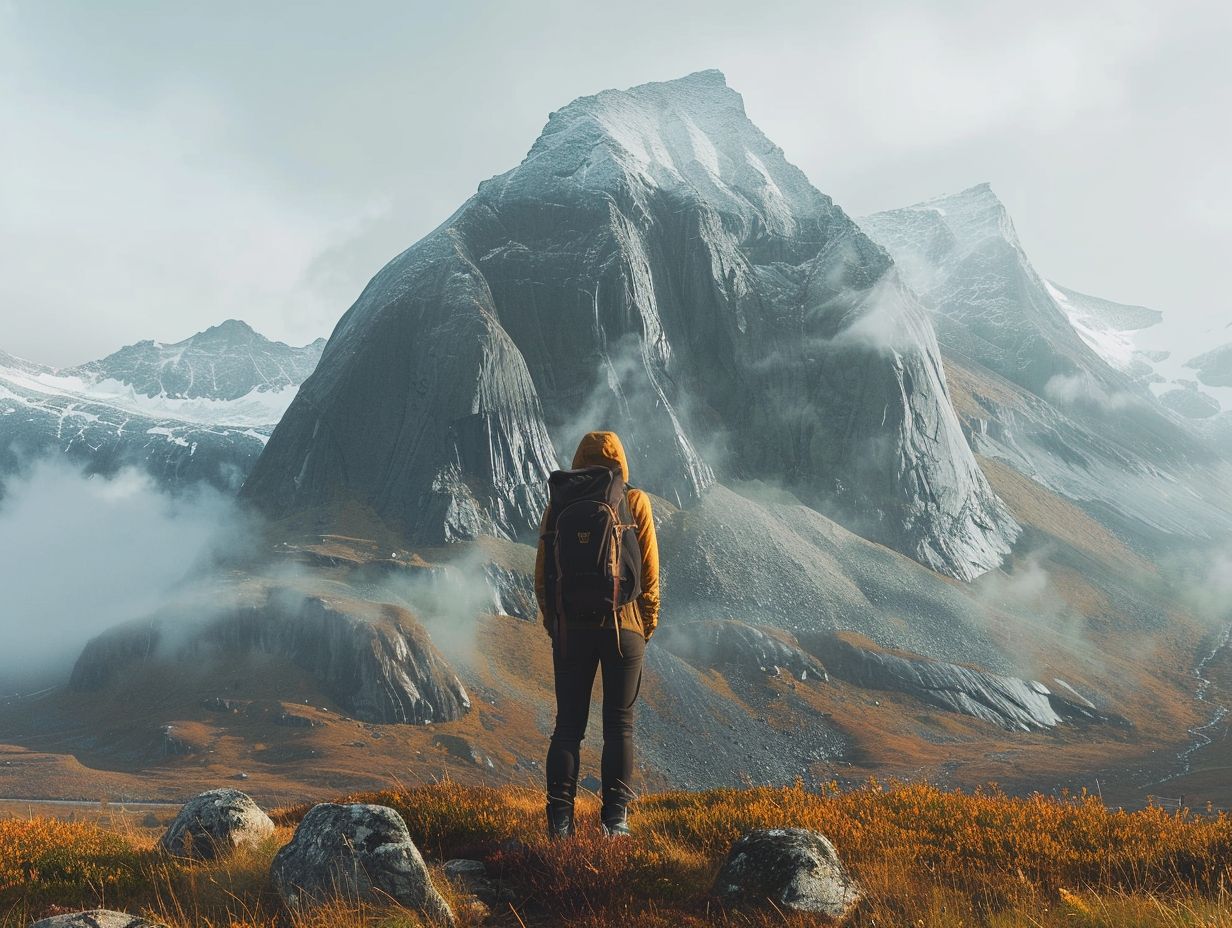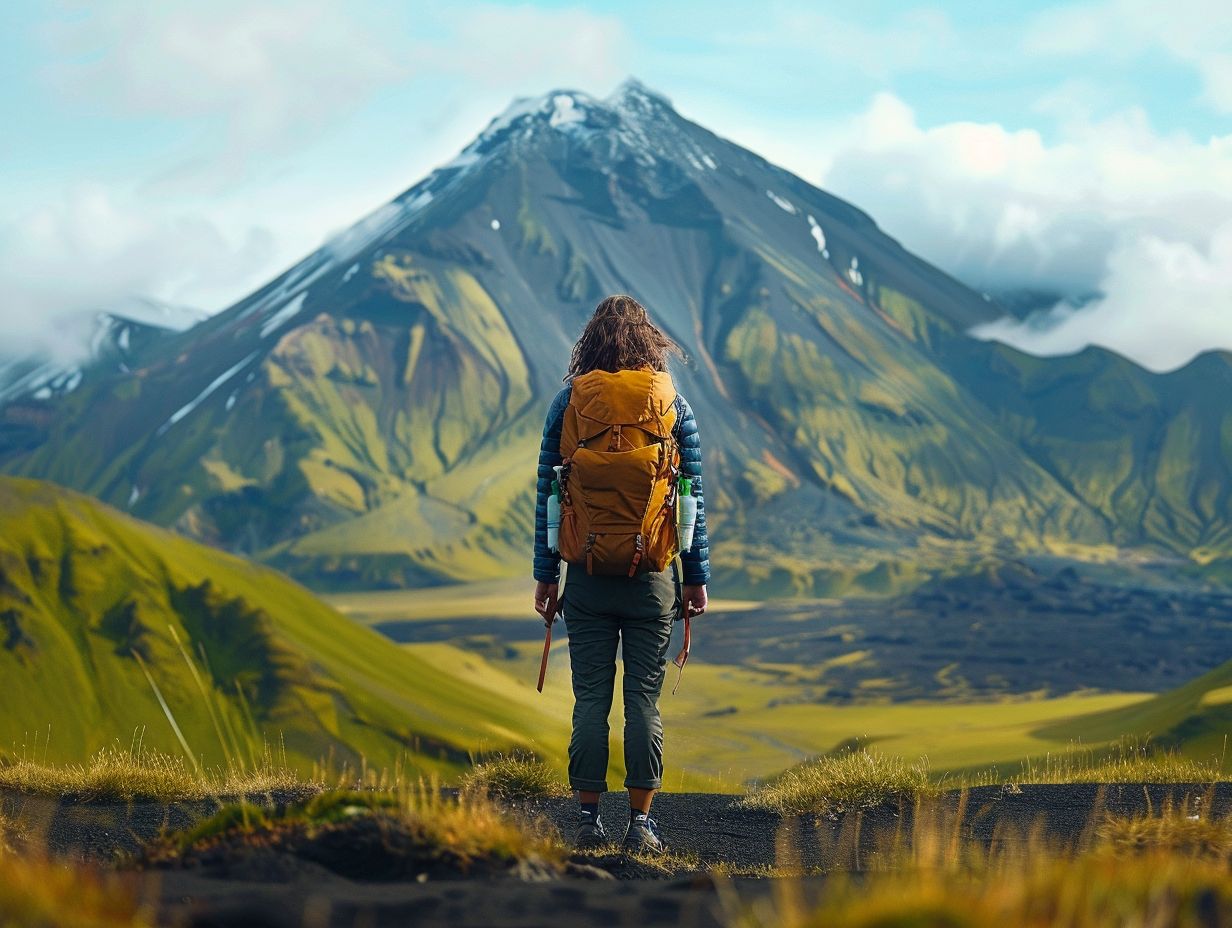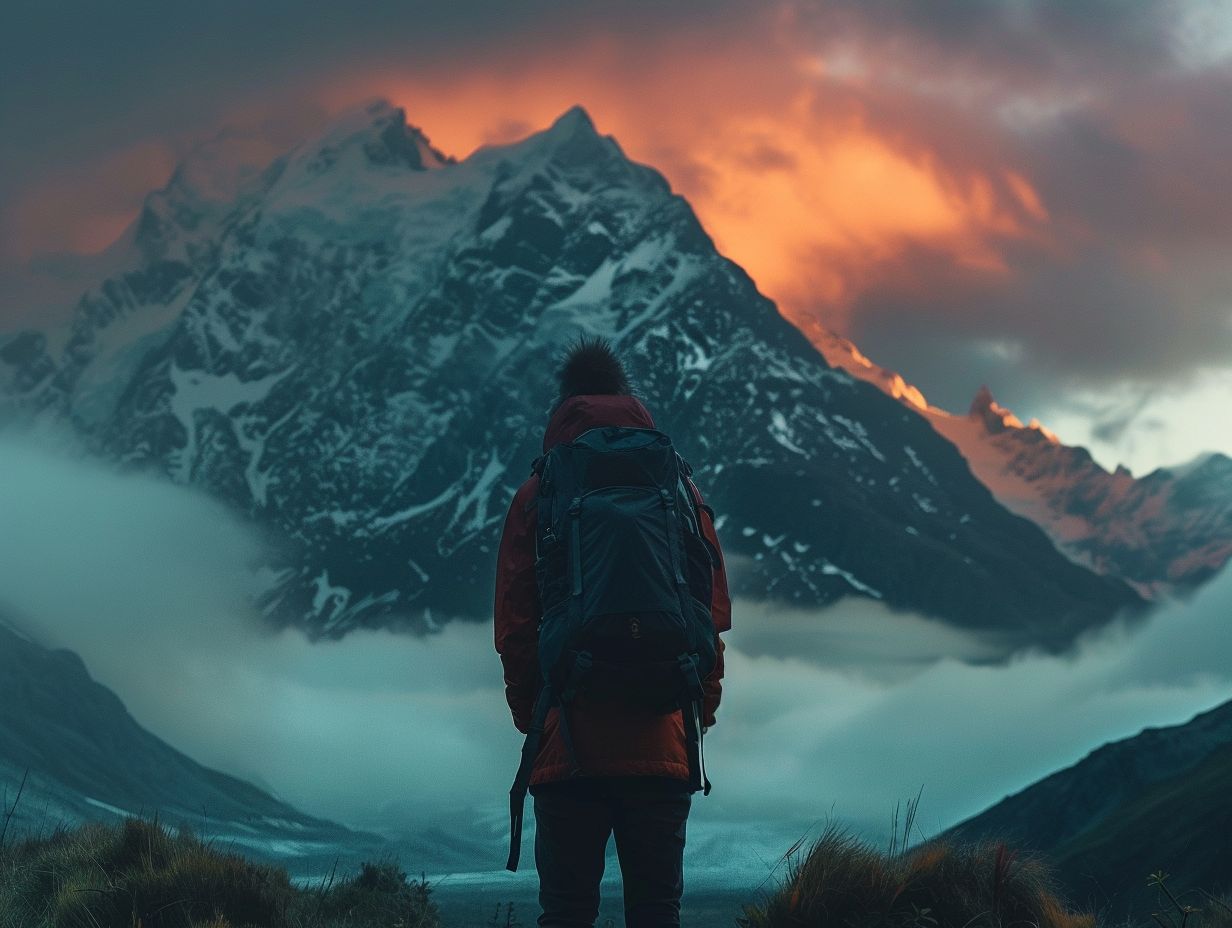
What Size Backpack For Kilimanjaro
Are you planning a hike up Kilimanjaro? One of the most crucial decisions you’ll make is choosing the right backpack for the journey.
We discuss the key factors to consider when selecting a backpack for Kilimanjaro, such as capacity, fit, weight, durability, and weather resistance.
Explore the recommended backpack sizes for the hike, what to pack in your backpack, and get tips for packing efficiently. By the end, you’ll have all the information you need to choose the perfect backpack for your Kilimanjaro adventure.
Key Takeaways:

- Consider capacity, fit, weight, durability, and weather resistance when choosing a backpack for Kilimanjaro.
- Daypacks are suitable for day hikes, while multi-day packs are recommended for longer treks on Kilimanjaro. Recommended backpack sizes vary depending on the length of your hike.
- Pack appropriate clothing and gear, food and water, a first aid kit, and other essentials for your Kilimanjaro hike. Use compression bags, distribute weight evenly, and keep important items accessible.
What to Consider When Choosing a Backpack for Kilimanjaro?
When choosing a backpack for the Kilimanjaro adventure, factors like capacity, comfort, essential features, straps, durability, and materials are pivotal in guaranteeing a successful and comfortable hike.
1. Capacity
The capacity of your backpack is essential for your Kilimanjaro trek, as it determines how much gear you can carry comfortably and efficiently.
When selecting a backpack, it’s crucial to consider the duration of your hike. For a multi-day trek like Kilimanjaro, aim for a capacity between 50-70 liters to accommodate clothing, sleeping gear, food, and other essentials.
Look for backpacks with gear loops on the exterior, which allow you to attach items such as trekking poles or a sleeping pad for easy access. These loops enhance convenience and accessibility on the trail.
2. Fit and Comfort
Ensuring a proper fit and maximum comfort with your backpack is crucial for a successful Kilimanjaro expedition, as it reduces strain and enhances endurance.
Adjustable straps play a vital role in achieving that perfect fit, allowing you to customize the backpack according to your body shape and size. This feature ensures the weight is evenly distributed, preventing strain on specific areas.
Plus straps, ventilation systems are equally important to keep the air flowing through the pack, reducing heat buildup and managing moisture from sweat. Efficient moisture management is key to staying dry and comfortable during long hikes.
Advanced suspension systems further enhance comfort by efficiently distributing the weight of the backpack, preventing discomfort and potential injury.
3. Weight
The weight of your backpack impacts your mobility and energy expenditure during the Kilimanjaro hike, making lightweight designs with effective compression systems a preferred choice.
Managing weight on your backpack is crucial for minimizing fatigue and enhancing your overall hiking experience. Weight management reduces strain on your body and allows you to cover longer distances comfortably.
Utilizing gear loops for external gear attachment offers convenient access to essential items like water bottles, trekking poles, or snacks without the need to rummage through your bag.
These features contribute to a more efficient and enjoyable hiking journey.
4. Durability
A durable backpack is essential for the rigors of the Kilimanjaro terrain, requiring high-quality materials, advanced construction techniques, and potentially a lifetime guarantee for peace of mind.
When trekking through challenging environments like Kilimanjaro, the durable backpack should be composed of top-notch materials such as ripstop nylon for its ability to resist tears and enhance longevity.
Adding to the appeal is a weather-resistant coating that protects the backpack and its contents from rain, snow, and other harsh elements, cementing its reliability in all conditions.
In addition, the reassurance of a lifetime guarantee underscores the manufacturer’s confidence in the product’s quality and durability, providing users with a sense of security and peace of mind for their investment.
5. Weather Resistance
Weather resistance is crucial for your backpack in the ever-changing conditions of Kilimanjaro, necessitating waterproof materials, breathable mesh panels, and effective ventilation systems.
When embarking on a challenging trek like Kilimanjaro, investing in a backpack with weather-resistant features is a necessity. Waterproof coatings play a pivotal role in keeping your gear dry.
The incorporation of breathable mesh panels enhances comfort by allowing proper airflow and reducing sweat buildup.
The presence of ventilation systems is vital for managing internal moisture accumulation, preventing mold, and ensuring your belongings remain protected and dry throughout the journey.
What Size Backpack Do You Need for Kilimanjaro?

Selecting the right size backpack for your Kilimanjaro trek involves understanding the difference between day packs and multi-day packs, as well as choosing from the recommended sizes based on your hiking needs.
Daypack vs. Multi-day Pack
Choosing between a daypack and a multi-day pack for your Kilimanjaro journey depends on the duration of your hike and the amount of gear you need to carry.
Daypacks are designed for shorter hikes, typically one-day excursions or quick adventures where you need to carry essentials like water, snacks, and a light jacket.
They are compact, lightweight, and usually have a capacity ranging from 10 to 30 liters, perfect for storing your basics without excess weight on your shoulders.
On the other hand, multi-day packs are built for extended treks that require carrying supplies for several days. These packs have larger capacities, starting from 40 liters and going up to 90 liters or more.
If you’re planning shorter hikes with minimal gear, a daypack is sufficient. For longer journeys or overnight stays, a multi-day pack provides the space and functionality to accommodate all your essentials comfortably.
Recommended Backpack Sizes for Kilimanjaro
Understanding the recommended backpack sizes for Kilimanjaro is crucial to ensure you have the right balance of capacity and comfort for your hiking needs.
When choosing a backpack size for your Kilimanjaro adventure, consider the duration of the hike.
For day hikes, a smaller pack around 20-30 liters may suffice, allowing you to carry essentials like water, snacks, and a light jacket. Longer treks spanning multiple days necessitate larger capacities.
Plus duration, factors like your body frame, weight distribution, and personal preference come into play.
Go for a backpack that fits snugly against your back, evenly distributing weight to prevent strain. Look for features like adjustable shoulder straps, hip belts, and compression straps to enhance comfort and stability on the trail.
What to Pack in Your Backpack for Kilimanjaro?
Packing the right essentials in your backpack for the Kilimanjaro expedition is crucial, including clothing, gear, food, water, a first aid kit, and other essential items for a safe and comfortable trek.
1. Clothing and Gear
Selecting the right clothing and gear for your Kilimanjaro adventure involves prioritizing waterproof, lightweight, and multi-functional items to ensure comfort and protection throughout the trek.
- Moisture-wicking layers are essential to keep you dry and regulate body temperature during the varying weather conditions on Kilimanjaro. Pair them with an insulated jacket to stay warm at higher altitudes.
- Sturdy hiking boots that provide ankle support are crucial for navigating steep terrains safely.
- Don’t forget to pack a reliable headlamp for early morning starts or late-night treks to the summit.
- Trekking poles can also be a savior, especially on the steep, rocky sections of the climb, offering stability and reducing strain on your joints.
2. Food and Water
Properly packing food and water in one’s backpack is essential for maintaining energy levels, hydration, and overall well-being during a Kilimanjaro hike.
Having adequate hydration is crucial for trekking in high-altitude environments like Kilimanjaro. Opting for nutrient-rich snacks such as trail mix, energy bars, and dried fruit can provide a quick energy boost.
Lightweight meal options like dehydrated meals or freeze-dried foods are convenient choices for sustenance on the trail. Incorporating foods high in carbs, proteins, and fats will help fuel your body.
Investing in a reliable hydration system ensures easy access to water while on the move. Look for options like hydration bladders or collapsible water bottles that are lightweight and easy to refill.
3. First Aid Kit
Carrying a well-equipped first aid kit in your backpack is essential for addressing minor injuries, illnesses, and emergencies that may arise during your Kilimanjaro expedition.
Some essential items to include in a comprehensive first aid kit for your Kilimanjaro trek are:
- Various sizes of bandages and gauze pads to dress wounds and apply pressure to stop bleeding.
- Antiseptic wipes or solutions to clean and disinfect wounds, preventing infection.
- Basic medications like pain relievers, antihistamines, and anti-diarrheal drugs to manage common health issues on the trail.
- Blister treatments such as moleskin or blister pads to prevent discomfort and further injury.
- Emergency supplies like a whistle, flashlight, and a space blanket for signaling and staying warm in case of unexpected situations.
Being prepared with these supplies can make a significant difference in how effectively you can address health concerns during your trek, ensuring a safer and more comfortable experience on Kilimanjaro.
Other Essentials

Don’t forget personal items such as sunscreen and insect repellent to protect yourself from the sun and bugs. Carrying identification is crucial for emergency situations or if assistance is required.
Organizing these essentials in easily accessible pockets or compartments within your backpack can save time and effort during the trek.
Tips for Packing Your Backpack for Kilimanjaro

Efficiently packing your backpack for the Kilimanjaro trek involves using compression bags, distributing weight evenly, keeping important items accessible, and preparing for changing weather conditions.
1. Use Compression Bags
Utilizing compression bags in your backpack for Kilimanjaro allows you to compact clothing and gear efficiently, maximizing space and reducing bulk for a streamlined hiking experience.
They also keep your clothes and gear organized and protected as well as save space. By squeezing out excess air, these bags enable you to fit more essentials into your pack without adding extra weight.
Separating items into different bags based on categories like clothing, toiletries, and electronics, makes it easier to find what you need quickly.
Compression bags help you achieve lightweight packing by allowing you to carry the necessary items without unnecessary bulk, ensuring a more comfortable and enjoyable hiking experience.
2. Distribute Weight Evenly
Evenly distributing the weight in your backpack is essential for maintaining balance, comfort, and stability while trekking on Kilimanjaro’s challenging terrain.
Adjustable straps allow you to customize the fit of your backpack according to your body’s unique shape and size. By adjusting the straps to sit comfortably on your shoulders and hips, you can prevent soreness and discomfort.
When packing your backpack, it’s important to balance heavy items by placing them closer to your back and towards the middle of the pack. This positioning helps in maintaining stability and prevents the load from pulling you backward
Lighter items can be distributed towards the top and sides of your backpack to keep the weight evenly spread and your center of gravity aligned.
3. Keep Important Items Accessible
Ensuring quick access to important items in your backpack is key to a seamless Kilimanjaro trek, requiring strategic organization, compartmentalization, and prioritization of essentials.
When preparing for your journey, think about what you need most often and place those items in easy-to-reach pockets or pouches. Consider using a table to organize your gear, separating clothes, snacks, first aid, and tools.
Keeping frequently used essentials within arm’s reach not only saves time but also ensures you are prepared for any situation that may arise while on the challenging Kilimanjaro terrain.
4. Pack for Changing Weather Conditions
When preparing for a trek on Kilimanjaro, it’s crucial to think about the wide temperature ranges you might encounter.
From the heat of the lower slopes to the freezing cold of the summit, having adaptable clothing that you can layer is key.
Start with a moisture-wicking base layer to keep sweat away from your skin, add insulating mid-layers for warmth, and pack a good quality waterproof jacket to shield you from rain or snow.
Don’t forget to include lightweight, quick-drying trousers that can double up as both protection from the sun and insulation against the cold.
Packing a reliable pair of waterproof pants is also essential for wet conditions. It’s wise to bring along versatile clothing items like convertible pants that can zip off into shorts for those warmer days.
Conclusion
Selecting the right backpack for your Kilimanjaro hike is a critical decision that impacts your comfort, safety, and overall experience on the mountain, with factors like recommended sizes and advanced suspension systems.
When choosing a backpack for Kilimanjaro, it is essential to prioritize comfort and functionality. Pay attention to the recommended sizes provided by manufacturers to ensure a snug and comfortable fit.
Investing in a pack with an advanced suspension system can significantly enhance your hiking experience by providing better weight distribution, reducing strain on your back.
Such features are crucial for long hikes where carrying supplies efficiently is key to a successful journey.
Frequently Asked Questions
1. What Size Backpack is Recommended for Kilimanjaro?
A: The recommended size for a backpack for Kilimanjaro is between 40-50 liters. This size will provide enough space for all your essential items without being too heavy or bulky.
2. Can I Use a Larger Backpack for Kilimanjaro?
A: While it is possible to use a larger backpack, it is not recommended. A larger backpack will add unnecessary weight and may hinder your movement while hiking. Stick to the recommended size for a more comfortable and enjoyable experience.
3. What if My Backpack is Smaller than the Recommended Size?
A: If your backpack is smaller than the recommended size, it may not be able to fit all your essential items. Consider packing only the most necessary items and try to keep the weight as light as possible. Alternatively, you can rent a larger backpack from local stores.
4. Do I Need a Special Backpack for Kilimanjaro?
A: While not necessary, having a backpack specifically designed for hiking can make your journey more comfortable. Look for features such as padded straps, ventilation, and water-resistant material.
5. How Important is the Fit of My Backpack for Kilimanjaro?
A: The fit of your backpack is crucial for a successful hike on Kilimanjaro. Make sure to adjust the straps and distribute the weight evenly to avoid discomfort and potential injuries. A well-fitting backpack will also make it easier to move and balance while hiking.
6. What Should I Pack in My Backpack for Kilimanjaro?
A: It is essential to pack light for your Kilimanjaro hike. Stick to the essentials such as layers of clothing, snacks, water, and personal items. Avoid overpacking and consider renting or purchasing any necessary gear at the base camp.